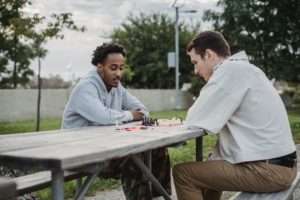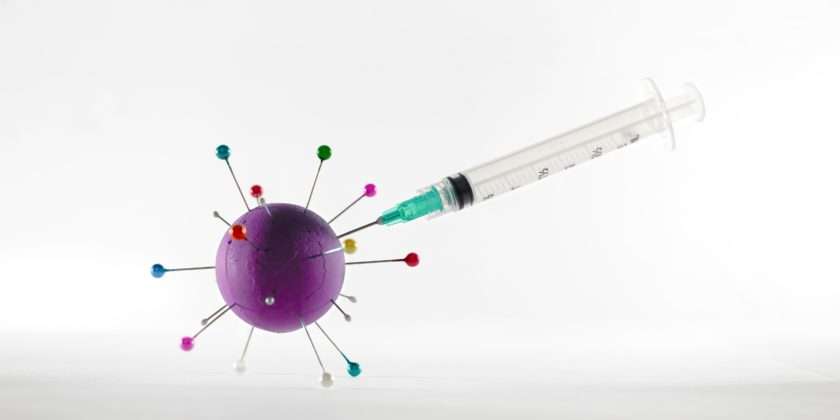Jay Harold worked for the Tennessee Valley Authority as an intern and traveled to Tuskegee in 1980 with a Tuskegee Institute student. I wasn’t aware of the horrors of the Tuskegee Experiment bestowed upon the hard-working people of the area, but now I know that this could have happened in many places. Here’s a refresher on what went down.
In 1932, the Public Health Service, working with the Tuskegee Institute, began a study to record the natural history of syphilis in hopes of justifying treatment programs for blacks. It was called the “Tuskegee Study of Untreated Syphilis in the Negro Male1.”
The study initially involved 600 black men – 399 with syphilis, 201 who did not have the disease. The study was conducted without the benefit of patients’ informed consent. Researchers told the men they were being treated for “bad blood,” a local term used to describe several ailments, including syphilis, anemia, and fatigue. In truth, they did not receive the proper treatment needed to cure their illness. In exchange for taking part in the study, the men received free medical exams, free meals, and burial insurance. Although originally projected to last 6 months, the study actually went on for 40 years. This one of many reasons why Black Americans are don’t trust the American Healthcare System.
Risk for COVID-19 Infection, Hospitalization, and Death By Race/Ethnicity2
| Rate ratios compared to White, Non-Hispanic persons | American Indian or Alaska Native, Non-Hispanic persons | Asian, Non-Hispanic persons | Black or African American, Non-Hispanic persons | Hispanic or Latino persons |
|---|---|---|---|---|
| Cases1 | 1.7x | 0.7x | 1.1x | 1.3x |
| Hospitalization2 | 3.7x | 1.0x | 2.9x | 3.1x |
| Death3 | 2.4x | 1.0x | 1.9x | 2.3x |
Race and ethnicity are risk markers for other underlying conditions that affect health including socioeconomic status, access to health care, and exposure to the virus related to occupation, e.g., frontline, essential, and critical infrastructure workers.
The table above shows you why you need to get the COVID19 Vaccine! (I have both shots of the Pfizer Vaccine)
COVID-19 vaccines are effective at protecting you from getting sick. Based on what we know about COVID-19 vaccines, people who have been fully vaccinated can start to do some things that they had stopped doing because of the pandemic. This post ”Fully Vaccinated? 5 Things You Can Do,” seeks to provide current and relevant information from a trusted source during the COVID-19 pandemic.
We’re still learning how vaccines will affect the spread of COVID-19. After you’ve been fully vaccinated against COVID-19, you should keep taking precautions – like wearing a mask, staying 6 feet apart from others, and avoiding crowds and poorly ventilated spaces – in public places until we know more.
These recommendations can help you make decisions about daily activities after you are fully vaccinated. They are not intended for healthcare settings.
Have You Been Fully Vaccinated3?
People are considered fully vaccinated:
- 2 weeks after their second dose in a 2-dose series, such as the Pfizer or Moderna vaccines, or
- 2 weeks after a single-dose vaccine, such as Johnson & Johnson’s Janssen vaccine
If you don’t meet these requirements, you are NOT fully vaccinated. Keep taking all precautions until you are fully vaccinated.
What You Can Start to Do
If you’ve been fully vaccinated:
- You can gather indoors with fully vaccinated people without wearing a mask or staying 6 feet apart.
- You can gather indoors with unvaccinated people of any age from one other household (for example, visiting with relatives who all live together) without masks or stayi

- If you travel in the United States, you do not need to get tested before or after travel or self-quarantine after travel.
- You need to pay close attention to the situation at your international destination before traveling outside the United States.
- You do NOT need to get tested before leaving the United States unless your destination requires it.
- You still need to show a negative test result or documentation of recovery from COVID-19 before boarding a flight to the United States.
- You should still get tested 3-5 days after international travel.
- You do NOT need to self-quarantine after arriving in the United States.
- If you’ve been around someone who has COVID-19, you do not need to stay away from others or get tested unless you have symptoms.
- However, if you live in a group setting (like a correctional or detention facility or group home) and are around someone who has COVID-19, you should still stay away from others for 14 days and get tested, even if you don’t have symptoms.
What You Should Keep Doing
For now, if you’ve been fully vaccinated:
- You should still take steps to protect yourself and others in many situations, like wearing a mask, staying at least 6 feet apart from others, and avoiding crowds and poorly ventilated spaces. Take these precautions whenever you are:
- In public
- Gathering with unvaccinated people from more than one other household
- Visiting with an unvaccinated person who is at increased risk of severe illness or death from COVID-19 or who lives with a person at increased risk
- You should still avoid medium or large-sized gatherings.

- You should still watch out for symptoms of COVID-19, especially if you’ve been around someone who is sick. If you have symptoms of COVID-19, you should get tested and stay home and away from others.
- You will still need to follow the guidance at your workplace.
What We Know and What We’re Still Learning
- We know that COVID-19 vaccines are effective at preventing COVID-19 disease, especially severe illness and death.
- We’re still learning how effective the vaccines are against variants of the virus that causes COVID-19. Early data show the vaccines may work against some variants but could be less effective against others.
- We know that other prevention steps help stop the spread of COVID-19 and that these steps are still important, even as vaccines are being distributed.
- We’re still learning how well COVID-19 vaccines keep people from spreading the disease.
- Early data show that the vaccines may help keep people from spreading COVID-19, but we are learning more as more people get vaccinated.
- We’re still learning how long COVID-19 vaccines can protect people.
- As we know more, CDC will continue to update our recommendations for both vaccinated and unvaccinated people.
Until we know more about those questions, everyone — even people who’ve had their vaccines — should continue taking steps to protect themselves and others when recommended.
![]() Want to learn more about these recommendations? Read our expanded Interim Public Health Recommendations for Fully Vaccinated People, corresponding Science Brief, and recommendations for healthcare providers.
Want to learn more about these recommendations? Read our expanded Interim Public Health Recommendations for Fully Vaccinated People, corresponding Science Brief, and recommendations for healthcare providers.
Jay Harold hopes you enjoyed this post, “Fully Vaccinated? 5 Things You Can Do!” Please share it and read more about Jay Harold here. Please take this advice from Muhammad Ali and give it back to others. “Service to others is the rent you pay for your room here on earth.”




